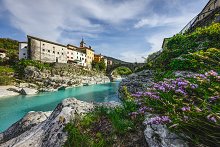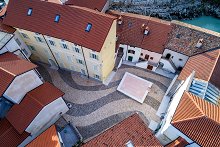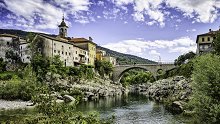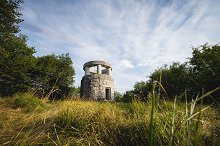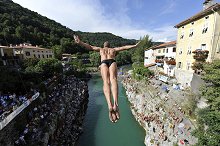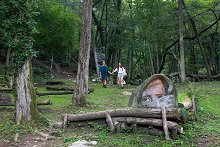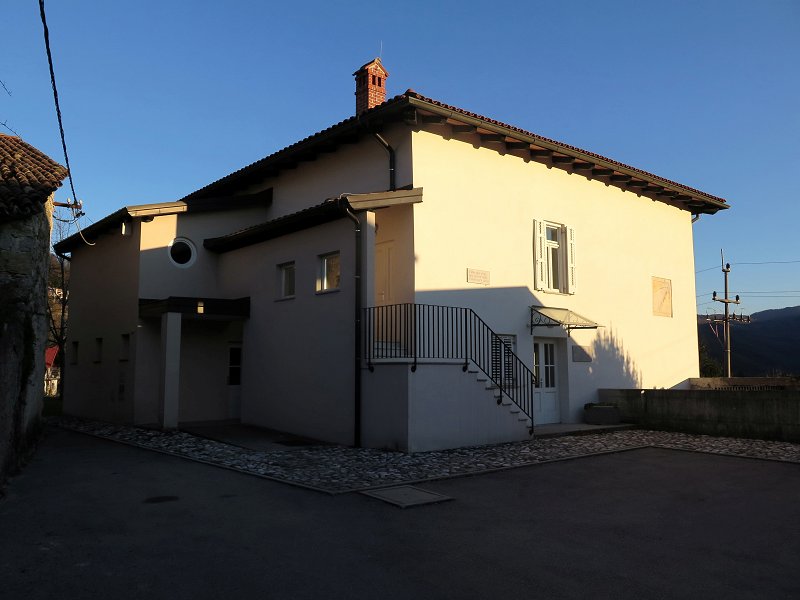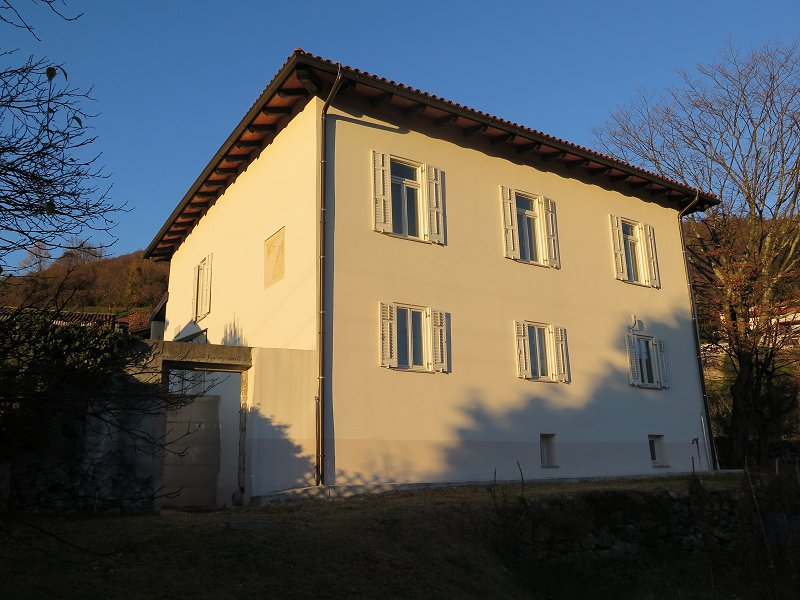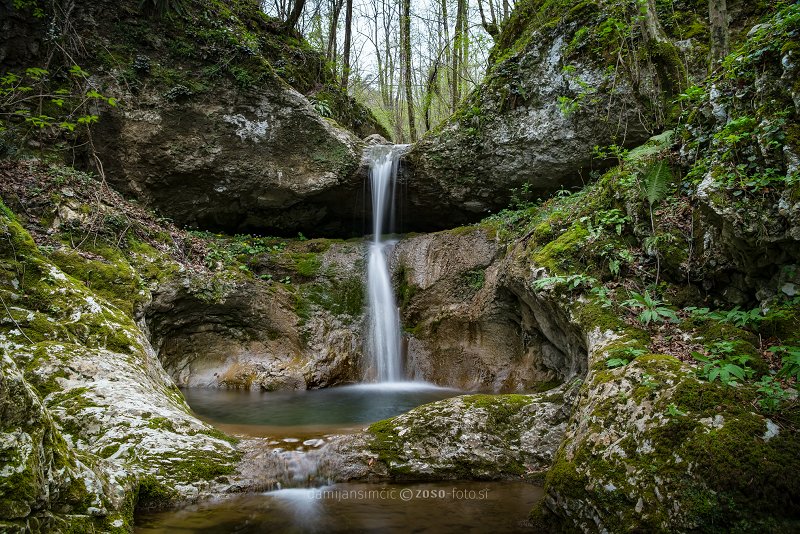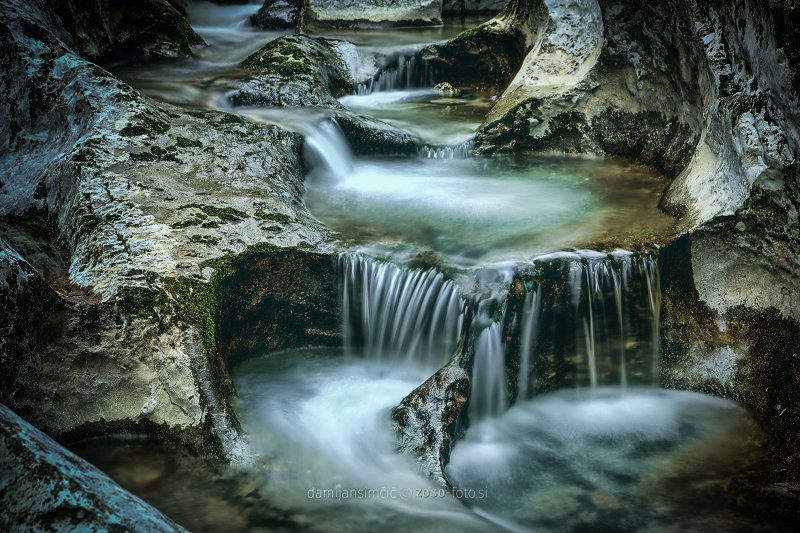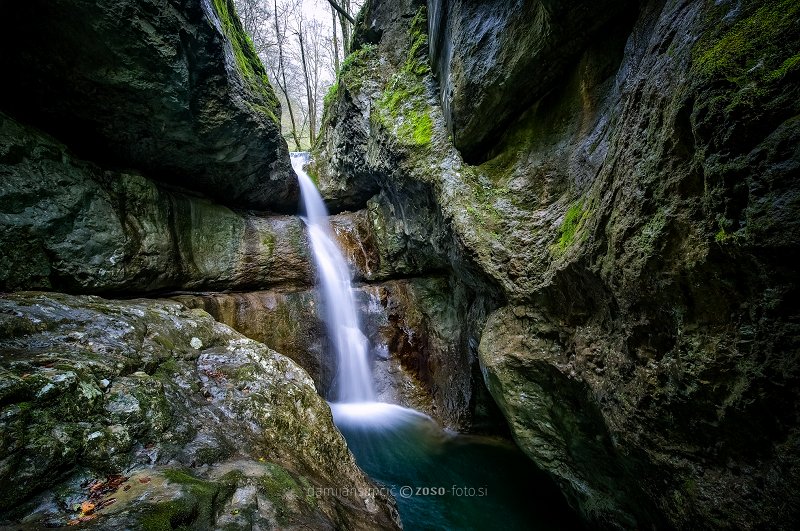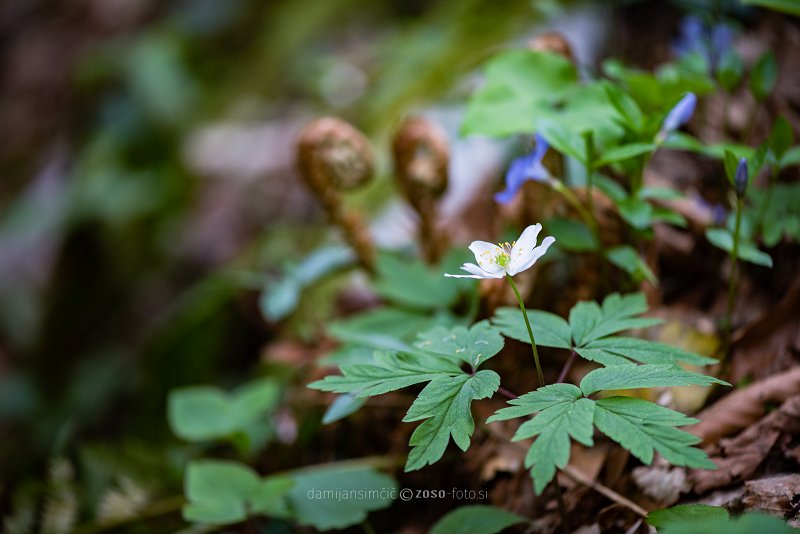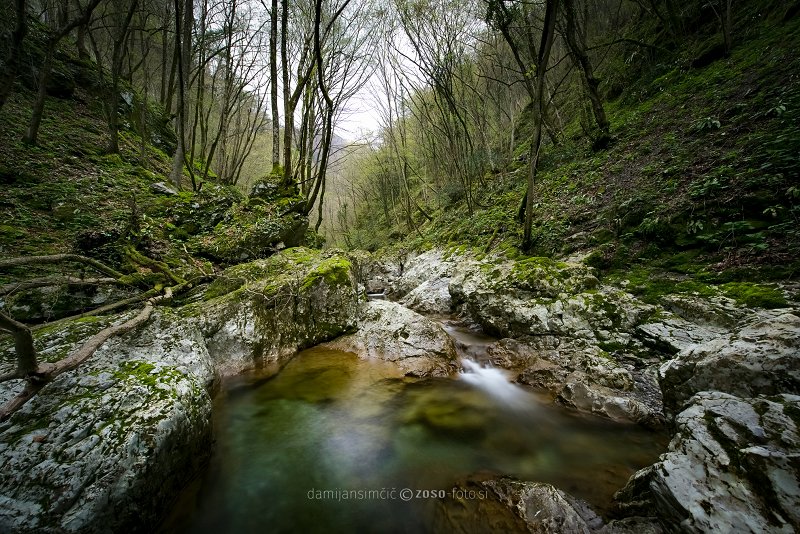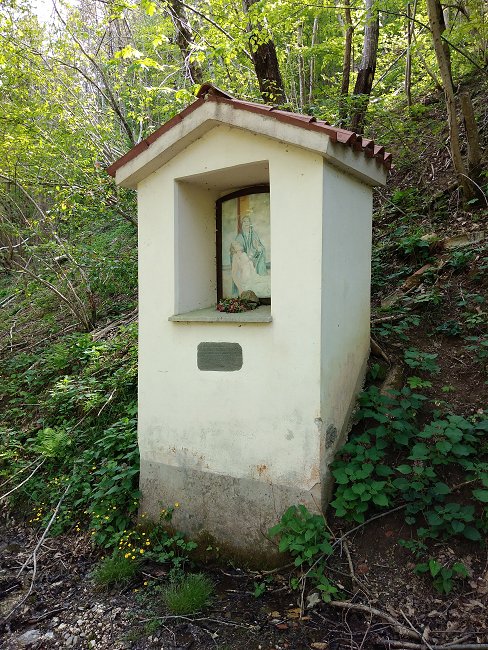Ročinj - Doblar
Once the largest settlement in the Municipality, nowadays, has only approximately 290 inhabitants. The village is divided into several parts: Plac, Zdenc, Seniško, Zasenk, Breg, Pejca, and Cesta. Due to its favourable location, Ročinj’s fields are very fertile and suitable for the cultivation of all field crops, fruits, and grapevines. Livestock production was once highly-developed, today, it has almost disappeared completely. By the Soča’s riverbed there is a source of hot water whose name has been preserved up to now, i.e. Toplice.
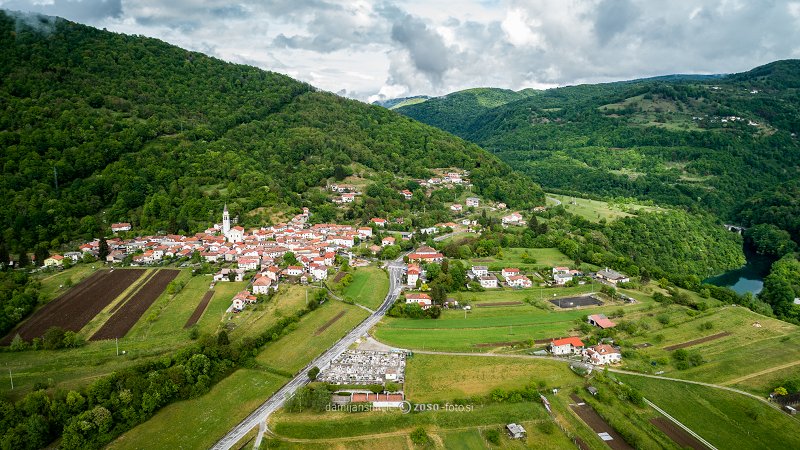
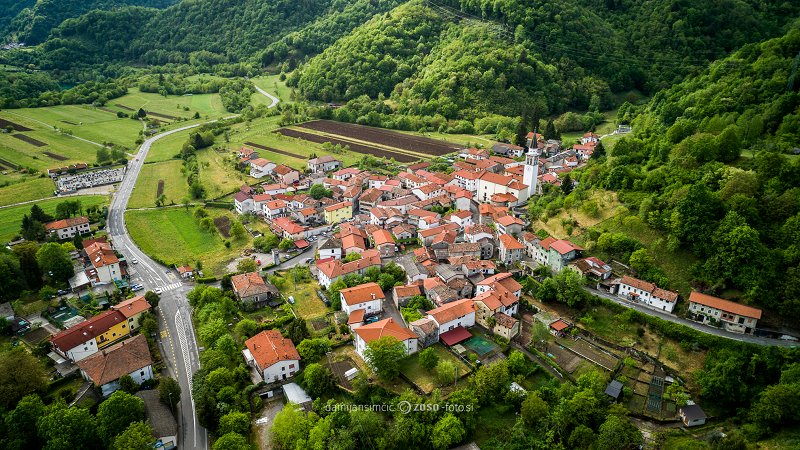
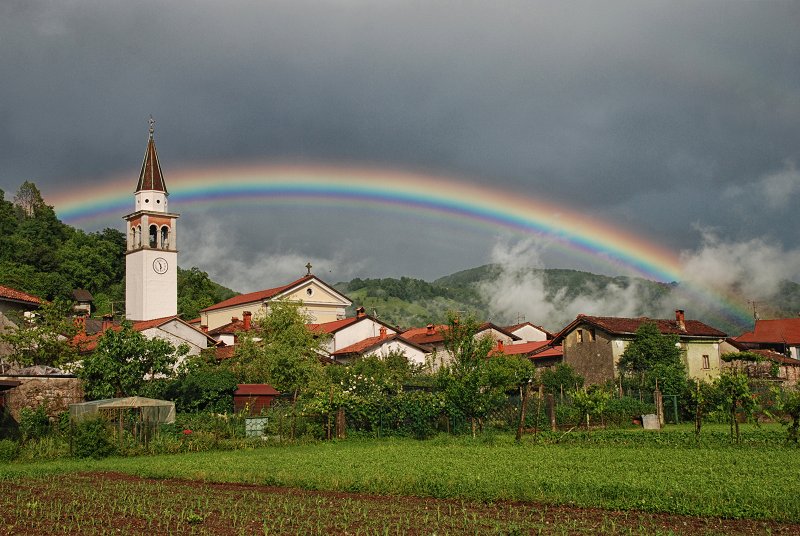
Foto: Damijan Simčič. Simon Prinčič
The village was first mentioned in 1083, when the Count Henrik from Gorica donated the properties (among which the village of Ročinj is also mentioned) to the Monastery in Rožac. There are several possibilities regarding the origin of the name. According to some sources, the name is supposed to be of the pre-Slavic, while others believe it derives from the word “ronek – slope” or the word “vroče - hot” due to the presence of a hot spring. It is also believed that the people of Ročinj originate from the Carinthian-Slovenian branch, as in the past the access from the Carinthian side was much easier due to the lack of bridges over the Soča River.
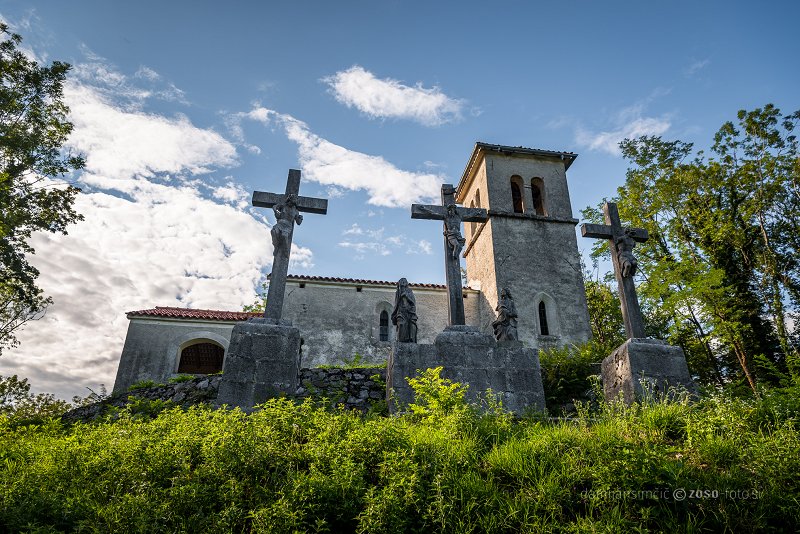 The Church in the village, which is dedicated to St. Andrej, is around 300 years old. The Church was heavily damaged during the World War I. Also, its bell tower was partially demolished, so a smaller and differently designed version of it was built. Above the village there is the Church of St. Pavel, built in the 13th century. The Church is known mainly for its marble carved Calvary from the 16th century.
The Church in the village, which is dedicated to St. Andrej, is around 300 years old. The Church was heavily damaged during the World War I. Also, its bell tower was partially demolished, so a smaller and differently designed version of it was built. Above the village there is the Church of St. Pavel, built in the 13th century. The Church is known mainly for its marble carved Calvary from the 16th century. 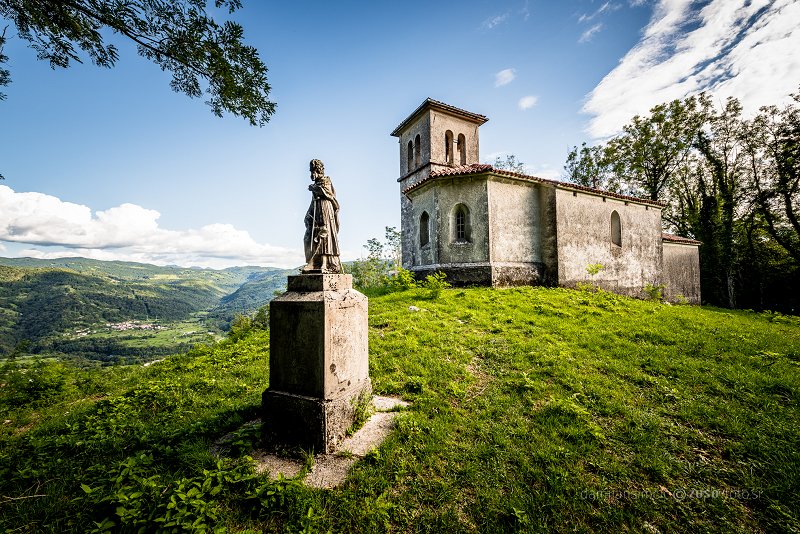
At the time of Austria and Italy, in the period from 1850 to 1928, the village was a Municipal Centre. During the Austro-Hungarian Empire the village had a highly-developed cultural life, as five societies were operating there: a Reading and Singing Society, the St. Ciril and Method Women Society, Orel Agricultural and Handicraft Reading Society, Sloga Society, and the Society of Mary’s Daughters. On all the holidays, both the liturgical and the State, the people organised dances, plays, recitals, and concerts.
During the World War I the locals were exiled to Italy, mostly to the town of Piemont. As the Soča River was the stage of the front, the village was damaged extensively and many people had to start anew. After the War, the Sloga Society and the National Reading Club formed once again but, unfortunately, the fascist Italy abolished them, as supposedly they did not act in accordance with the government policy.
Ročinj is the home town of many prominent personalities, t.i. a Beekeeping expert, Donat Jug (1879-1952), a Composer, Vinko Vodopivec (1887-1952), the leader of the Tolmin Revolt, Ivan Gradnik (1688-1714), and a member of the TIGR Organisation, Stanislav Kamenšček (1908-1978).
During the period from 1809 to 1819, here lived also a Priest, alpine climber, cultural worker, and a Poet, Valentin Stanič. He gave the incentive for the construction of a school on the site where a mansion of some French Count supposedly stood. He was a very versatile person – he taught children to read and write, although it must be emphasised that much of his attention was devoted also to the physical education. He also helped farmers in the implementation of an advanced agriculture – he taught them how to fertilise, plough, prune, etc. In addition to that, he prepared various home medicines and vaccinated people against Smallpox. Stanič left the village in 1819, because the Archbishop Wallant from Gorica appointed him Canon in Gorica.
Dom Valentina Staniča (Home of Valentin Stanič)
Dom Valentina Staniča is a multi-purpose object with a Cultural Hall in the village of Ročinj. Its official opening took place on 26th September 2010.
Sundial on the Home of Valentin Stanič in the village of Ročinj
The sundial is the work of the same author who also painted the two sundials on the Stara kaplanija (Old Vicarage) in Kobarid and three sundials on the Parish Church in Cerkno. All these sundials were created in the period from 1720 to 1730. The sundial in the village of Ročinj was made in 1726.
In 2010, when the renovation of his Home took place, the sundial’s painting was also renovated, although if looked at from the astronomic point of view, a mistake was made, as the line for the twelfth hour was drawn in an incorrect place (or better yet, there was not supposed to be one in the first place). However, the sundial shows the correct time from 1 pm to the sunset. It also shows the year-round movement of the sun. The central straight line indicates both equinoxes, whereas the upper line indicates the winter solstice and the lower line indicates the summer solstice. The bar is attached in the original manner on lead.
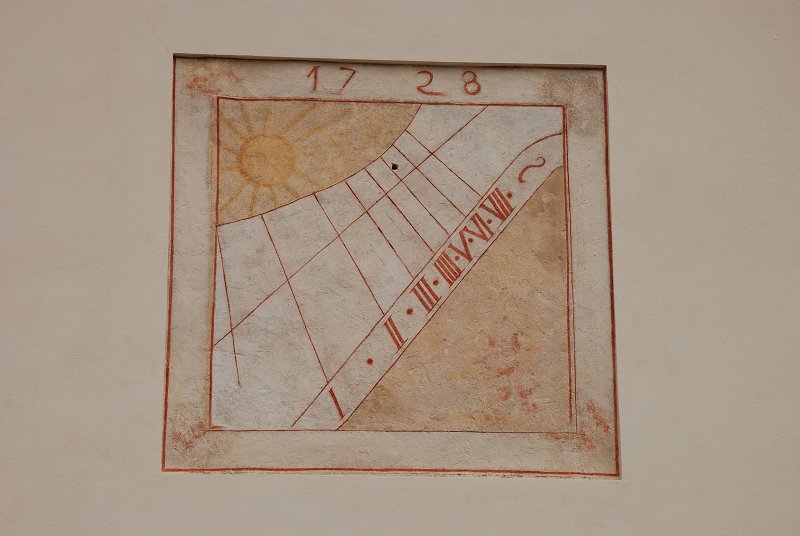 As the sundial is placed on the south-west façade, it shows the time with the length of the shadow, unlike the one in Kanal which shows time with the angle of shadow. This different manner of telling the time is a speciality of the aforementioned author, as well as a speciality of the Soča area. The sundial was restored by Bojan Frantar (Author: Bojan Frantar).
As the sundial is placed on the south-west façade, it shows the time with the length of the shadow, unlike the one in Kanal which shows time with the angle of shadow. This different manner of telling the time is a speciality of the aforementioned author, as well as a speciality of the Soča area. The sundial was restored by Bojan Frantar (Author: Bojan Frantar).
DOBLAR
Doblar is a scattered settlement in the lower Soča Valley. It lies on the right bank of the Soča River, just above the mouth of the Doblarca Stream. The place was first mentioned in 1377. The village has no real centre, as only a few houses can be found in every hamlet - by the dam of the Doblar Hydroelectric Power Plant, in the Doblarca Valley and its affluent, Lepenke Stream, are located Gorenji Doblar, Brnk, Dolina, Jelovec, Julija, Kolarji, Osredek and Strmovnik and on the slope high above the Soča River, there is Gomila, whose solitary farms have all been abandoned up to now. The Doblarca Gorge is a natural attraction.
The painted homestead on Doblar
A storey farmhouse on Doblar is set on a steep slope above the settlement. It is a remarkable building with the elements of the Mediterranean and alpine type of building. The farmhouse is roofed with a semicircular gable roof with red tiles (“korci”) and a wide overhang above a wooden hallway that runs over the entire entrance façade. The entrances to the vestibule and to the wooden hallway are decorated with two semicircular portals. All the square windows are furnished with stone frames where, in the corners, sewn edges are still visible. At the lower portal is placed a stone plate with the inscription “No.3 POD IACOPAM IPAVIZ 1792”.
The first storey is enhanced with frescos dating back to 1798 and to the end of the 19th century. The paintings present the Crucifixion, St. Miklavž, the pilgrimage Mary and the St. Florjan. The younger of the frescos depicts the motif of the legend of Anton Pandovanski. Inside the house, a symmetrical ground plan black kitchen with a fireplace is preserved.
The Doblarec Gorge
Doblarec (Perilo) is the strongest right affluent of the Soča River, in its middle flow. A quick deepening of the Soča River in the Quaternary has lowered its erosion base, due to which it has excavated a gorge where several picturesque waterfalls can be found. The waterfalls can also be found by the affluent. Right behind the confluence with the Lepenka Stream, Doblarec has carved a deep, tight gorge in the limestone. The gorge narrows into 25-30 metres deep beds under the bridge towards Kolar. The gorge, its beds and waterfalls are visible from the road which runs by the stream, although access to the stream or its beds is dangerous in some places.
The Doblarca Gorge is recorded at the Institute of Natural and Cultural Heritage in Nova Gorica.
Plague Memorial at Jelovec
On the way along the Lepenka stream, in front of the hamlet of Jelovec near Doblar, there is a plague memorial dedicated to Our Lady of Sorrows. It was erected in 1856 by locals, brothers Luka and Ivan Hvalica from a nearby homestead dubbed 'Pri Kovaču' in memory of the cholera epidemic that affected the area the year before. In 2009 the memorial was renovated under the direction of restorer Anton Naglost and conservator Andreja Ščukovt. In the immediate vicinity of the plague memorial, along the Lepenka stream (a tributary of the Doblarac), the remains of Kovač's mill can be seen, which belongs to the Pri Kovaču homestead and lies just above the memorial.
